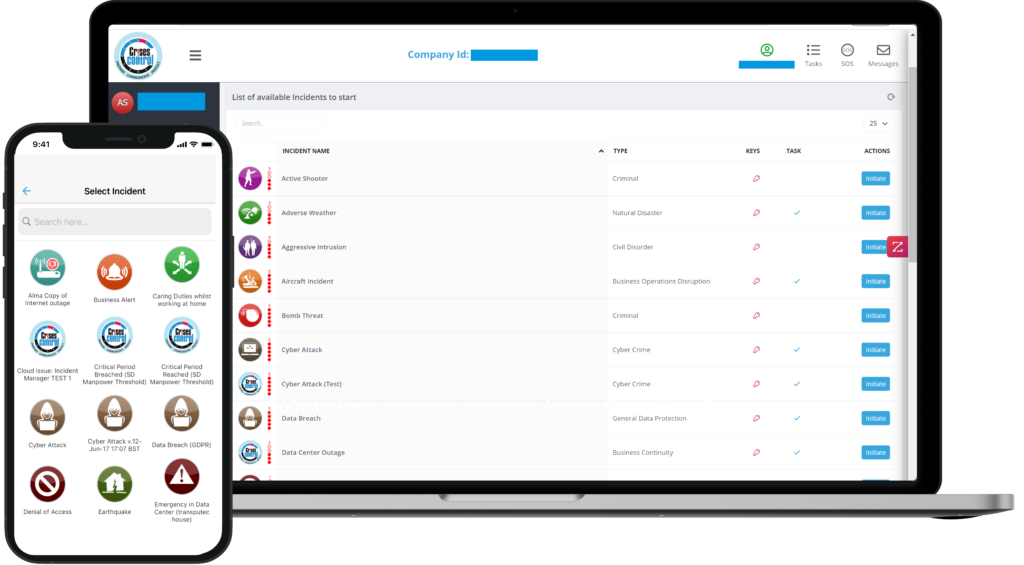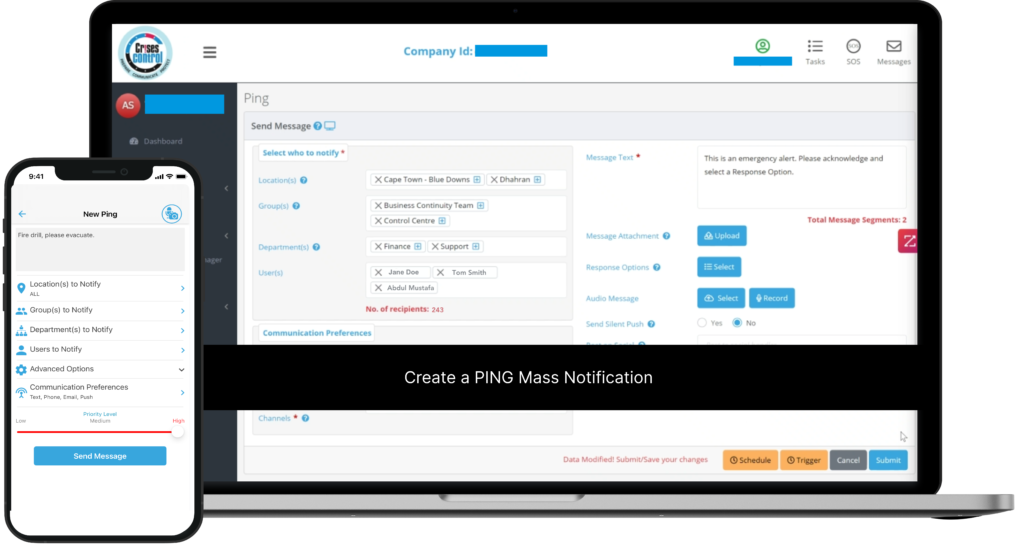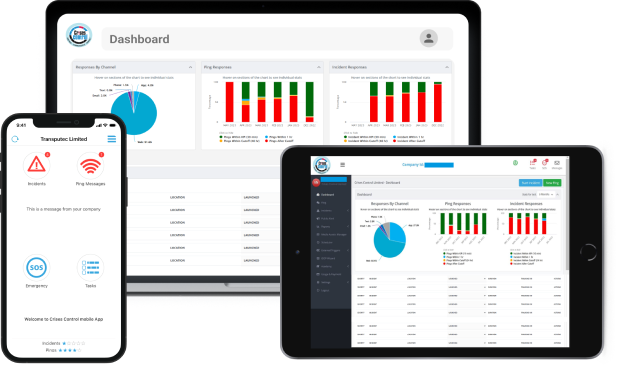Written by Anneri Fourie | Marketing Executive
In the face of unexpected emergencies, a well-structured fire evacuation plan is not just a regulatory requirement, but a crucial component of workplace safety. Whether you’re managing a small office or a large industrial facility, having a comprehensive fire evacuation plan ensures that you’re prepared to protect your employees and assets effectively.
This blog delves into the essential steps for crafting a robust fire evacuation plan and explores how integrating crisis management software, like Crises Control, can enhance your emergency preparedness.
1. Assessing Your Business’s Fire Risks
Identify Potential Hazards
The first step in creating an effective fire evacuation plan is to identify potential fire hazards within your business. This includes evaluating your facility’s layout, equipment, and operations to pinpoint areas where fires could originate. For instance, in manufacturing settings, flammable materials or electrical equipment might pose significant risks, while office environments might have different concerns such as overloaded power strips or heating systems.
Evaluate Vulnerabilities
Once hazards are identified, assess the vulnerabilities associated with them. Consider factors such as the building’s design, the placement of fire exits, and the accessibility of escape routes. It’s essential to understand how these vulnerabilities might impact the effectiveness of your evacuation plan.
Crises Control Solution
Crises Control’s Incident Management feature allows you to document and track identified risks and vulnerabilities, providing a centralised system for risk assessment and management.
2. Designing the Fire Evacuation Plan
Create Clear Escape Routes
Designing clear and accessible escape routes is fundamental to any fire evacuation plan. Ensure that escape routes are free from obstructions and are clearly marked with appropriate signage. The routes should lead to safe assembly points outside the building, where employees can gather and be accounted for.
Develop Assembly Points
Establish safe assembly points away from the building to prevent congestion and ensure a clear view of the entire area. Make sure these points are known to all employees and are included in the fire evacuation plan.
Incorporate Accessibility Needs
Your fire evacuation plan must accommodate employees with disabilities. This includes providing accessible routes and assigning specific roles to assist individuals who may need additional support during an evacuation.
Crises Control Solution
Use the Task Manager and Incident Plan Builder tools from Crises Control to create detailed evacuation routes and ensure that accessibility needs are addressed in your plan.

Interested in our Incident Management Software?
Customise your Crisis Incident Management Software to meet your specific needs with our flexible tools & stay connected and informed during the crisis and incident management process
3. Establishing Roles and Responsibilities
Assign Key Roles
Clearly define roles such as fire wardens, floor marshals, and emergency coordinators. Each role should have specific responsibilities, such as guiding employees to safety or conducting headcounts at assembly points.
Training and Drills
Regular training and fire drills are crucial for ensuring that employees understand their roles and the evacuation procedures. Drills help identify any weaknesses in the plan and provide an opportunity to refine the process.
Crises Control Solution
The Reporting and Audit feature in Crises Control helps track training progress and drill outcomes, providing valuable insights into areas that may need improvement.
4. Implementing Communication Systems
Emergency Alerts
A reliable communication system is essential for conveying emergency alerts during a fire. This system should be able to quickly disseminate information to all employees, regardless of their location within the building.
Integration with Fire Alarm Systems
Ensure that your emergency alert system integrates with your existing fire alarm systems to provide a seamless response. This integration helps ensure that alerts are sent out immediately when a fire is detected.
Crises Control Solution
Crises Control’s Ping Mass Notification tool enables real-time communication and alerts, ensuring that employees receive timely information during a fire emergency.
Interested in our Ping Mass Notification Software?
Efficiently alert everyone in seconds at scale with our Mass Notification System – PING, get the message out fast and ensure rapid response and recovery.

5. Testing and Reviewing the Plan
Conduct Regular Drills
Regular fire drills are essential for testing the effectiveness of your fire evacuation plan. Drills help ensure that employees are familiar with the procedures and can execute them efficiently under pressure.
Review and Update
Periodically review and update your fire evacuation plan based on drill results and changes in the business environment. This includes updating escape routes, roles, and communication procedures as necessary.
Crises Control Solution
Crises Control’s Incident Management and Easy Integration tools support the review and updating process, making it easier to adapt your plan to new requirements or changes.
6. Documenting and Communicating the Plan
Create Documentation
Thorough documentation of the fire evacuation plan is vital for ensuring that all employees are aware of the procedures. This documentation should include detailed descriptions of escape routes, assembly points, and roles.
Ensure Accessibility
Make sure that the fire evacuation plan is easily accessible to all employees. This can be achieved through digital platforms, posted notices, or employee handbooks.
Crises Control Solution
Crises Control’s user-friendly interface and cloud-based storage ensures that all employees have access to up-to-date evacuation plans and related documentation.
Conclusion
Creating an effective fire evacuation plan is crucial for ensuring workplace safety and compliance. By following the steps outlined in this blog, you can develop a comprehensive plan that addresses potential risks, designs clear evacuation routes, assigns roles, and implements reliable communication systems.
Integrating Crises Control’s suite of tools into your fire evacuation planning process can streamline these efforts, providing a robust framework for managing and improving your emergency preparedness.
To see how Crises Control can enhance your fire evacuation planning and overall crisis management strategy, contact us today to get a free personalised demo. Let us help you ensure that your business is prepared for any emergency.
Request a FREE Demo








